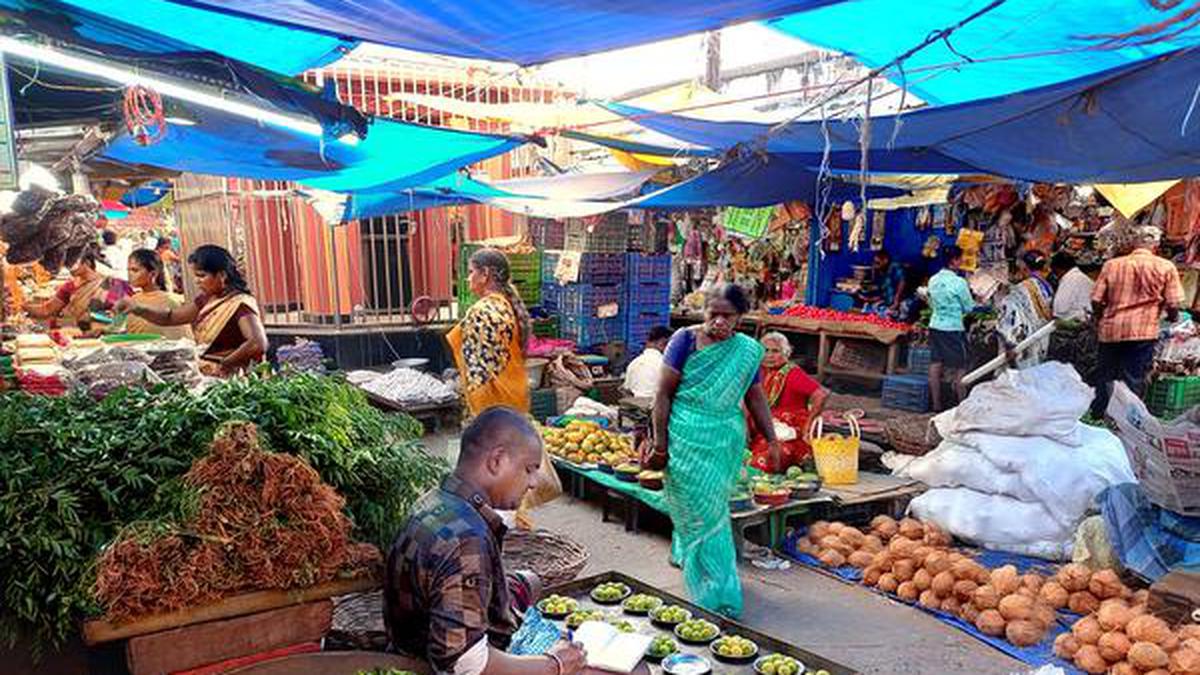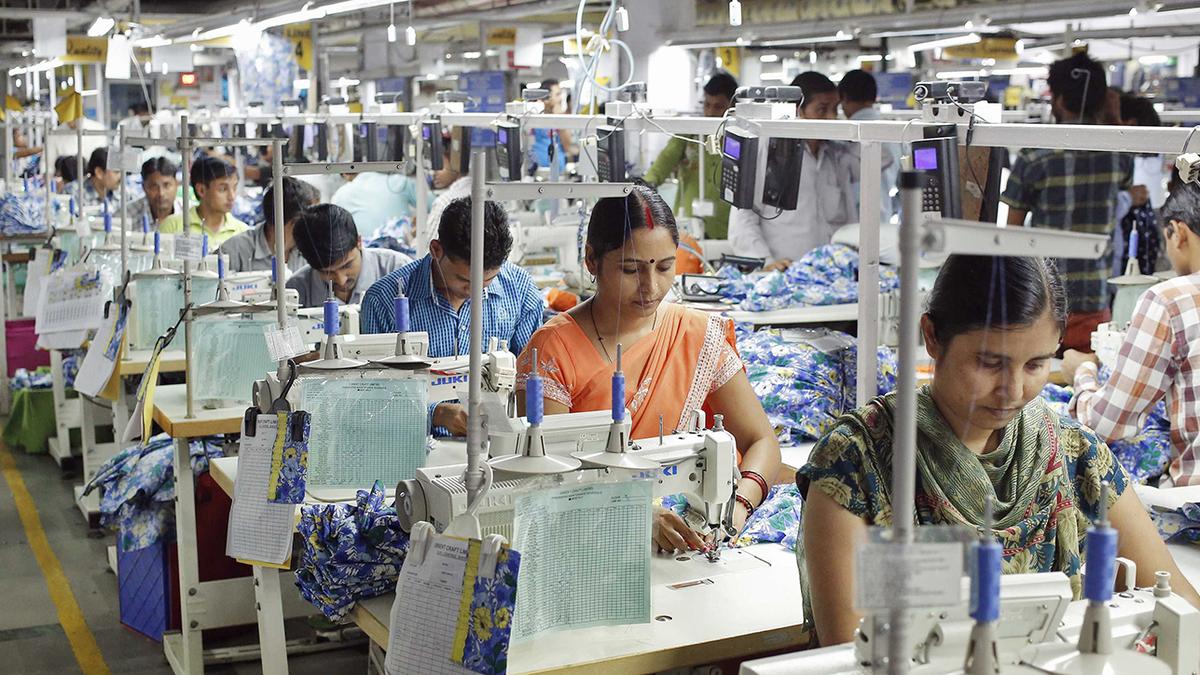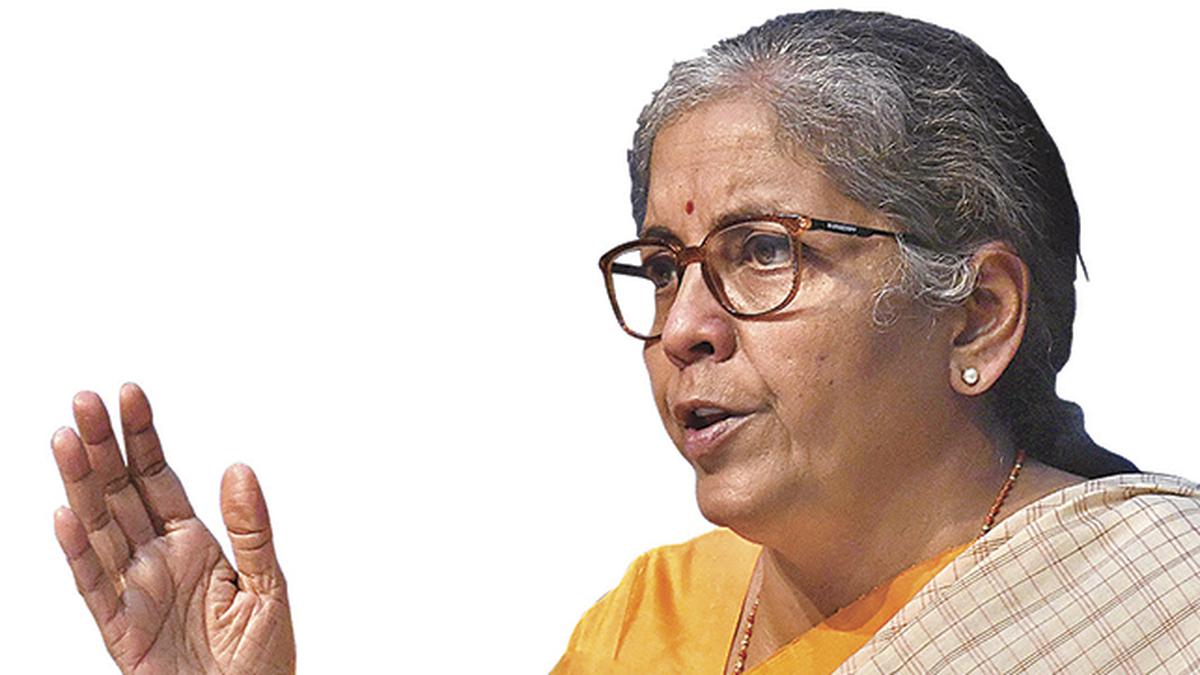Retail inflation eased to a three-month low, official data show. File
| Photo Credit: Special Arrangement
India’s retail inflation eased to a three-month low of 5.1% in January from 5.7% a month earlier, with food price rise cooling a bit to 8.3% compared with 9.5% in December 2023.
January’s headline inflation pace is slightly higher than the 5% average projected by the Reserve Bank of India (RBI) last week for the current final quarter of 2023-24.
Any interest rate cut hopes will have to wait till at least August if not longer, as the Central bank expects inflation to average 5% in the April to June quarter as well, before it hits its stated inflation target of 4% in the next quarter.
While overall inflation faced by urban consumers dropped to 4.92% from 5.5% a month ago, food inflation remained sharp at 9%, sliding a tad from 10.4% in December. By contrast, rural consumers faced food inflation of 7.91% in January, down from 9% in December, but their overall price rise pace was higher than their urban counterparts at 5.34%.
On a month-on-month basis, the Consumer Price Index (CPI) dropped 0.11% while the Consumer Food Price Index fell 0.73%. A year ago, in January 2023, CPI inflation stood at 6.52%, while food price inflation stood at 6%.
Among food items, vegetables inflation remained above 27%, just slightly below the 27.6% recorded in December. The price rise in pulses also cooled marginally from 20.7% in December to 19.5% in January.
Cereals and spices inflation saw slightly better moderation, dropping from 9.9% and 19.7% in December to 7.8% and 16.4%, respectively. Fruits inflation also fell from 11.1% to 8.65% in January, while milk prices rose 4.6% compared with 5.1% in December.
Inflation in eggs, however, picked up pace to touch 5.6% in January, as did sugar and confectionary price rise which hit 7.5% from 7.1% a month earlier.
Most non-food items continued to see weaker upticks in prices compared to food items, with personal care and effects that had clocked a 7.3% rise in prices in December, dropping below 6%. Education inflation inched up a tad from 4.77% in December to 4.93% in January, but the pace of rise in healthcare costs dropped from 5.1% to 4.8%.
Half of the 22 major States for which the National Statistical Office calculates inflation rates registered a price rise below the national average of 5.1%, with Delhi recording the lowest inflation of 2.56%, followed by Madhya Pradesh (3.93%), Kerala (4.04%), and Tamil Nadu (4.12%).
On the other hand, five States reported inflation of over 6%, breaching the RBI’s tolerance threshold for price rise. Those States are Odisha (7.55%), Telangana (6.34%), Haryana (6.24%), Gujarat (6.21%), and Karnataka which witnessed 6.1% inflation in January.
“The correction in the inflation for food and beverages was led by a favourable base effect. While rabi sowing has caught up with last year’s level, reservoir storage remains well below the year-ago levels in most regions, continuing to imbue caution into the outlook for the rabi harvest,” Aditi Nayar, chief economist at rating firm ICRA, said.
CareEdge Ratings’ chief economist Rajani Sinha expressed concern about the persistent double-digit or high inflation in spices, pulses and cereals, despite a sequential moderation in vegetable and fruit prices. This, she said, poses a risk of potentially broadening price pressures and de-anchoring inflationary expectations.
“We foresee cumulative rate cuts of 50 to 75 basis points, commencing in the August 2024 Monetary Policy Committee meeting, and a stance change in the preceding review, after there is some visibility on the monsoon turnout,” Ms. Nayar reckoned. One basis point equals 0.01 percentage point.



